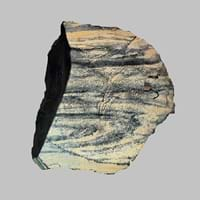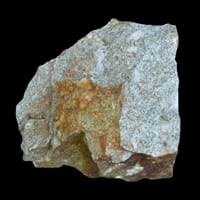Definition
Oil Shale is a fine-grained sedimentary rock from which oil is extracted
Tonalite is a coarse-grained plutonic rock consisting mainly of sodic plagioclase, quartz, and hornblende or other mafic minerals with phaneritic texture
Origin
Unknown
Tonale, Italy
Discoverer
Unknown
Unknown
Etymology
From Old English scealu in its base sense of thing that divides or separate
From Tonale Pass, northern Italy, + -ite1
Class
Sedimentary Rocks
Igneous Rocks
Sub-Class
Durable Rock, Soft Rock
Durable Rock, Hard Rock
Group
Not Applicable
Plutonic
Other Categories
Fine Grained Rock, Opaque Rock
Coarse Grained Rock, Fine Grained Rock, Medium Grained Rock, Opaque Rock
Texture
Splintery
Phaneritic
Color
Black, Brown, Buff, Green, Grey, Red, Yellow
Black, Brown, Light to Dark Grey, White
Durability
Durable
Durable
Appearance
Muddy
Banded and Foilated
Interior Uses
Not Yet Used
Decorative Aggregates, Entryways, Flooring, Homes, Interior Decoration
Exterior Uses
Not Yet Used
As Building Stone, As Facing Stone, Paving Stone, Garden Decoration, Office Buildings
Other Architectural Uses
Not Yet Used
Curbing
Construction Industry
Cement Manufacture, Construction Aggregate, for Road Aggregate, Serves as an Oil and Gas Reservoir rock
As Dimension Stone, Cement Manufacture, Cobblestones, Construction Aggregate, for Road Aggregate
Medical Industry
Not Yet Used
Not Yet Used
Antiquity Uses
Artifacts
Artifacts, Sculpture
Commercial Uses
An Oil and Gas Reservoir
Cemetery Markers, Creating Artwork
Types
Carbonate-rich Shale, Siliceous Shale and Cannel Shale
Dacite
Features
Easily splits into thin plates, Generally rough to touch, Is one of the oldest rock, Very fine grained rock
Is one of the oldest rock, Typically speckled black and white.
Archaeological Significance
Monuments
Not Yet Used
Not Yet Used
Famous Monuments
Not Applicable
Not Applicable
Sculpture
Not Yet Used
Used
Famous Sculptures
Not Applicable
Data Not Available
Pictographs
Not Used
Not Used
Petroglyphs
Not Used
Not Used
Figurines
Not Yet Used
Used
Formation
Oil Shale forms on the beds of seas and lakes and its formation starts with the organic debris settling and accumulating at the bottom of a lake or sea which are then transformed into rock with the help of high temperature and pressure.
When alkali feldspar is extracted from granite, it changes to granitoid and later, it becomes tonalite with quartz as major mineral.
Mineral Content
Albite, Biotite, Calcite, Chert, Chlorite, Dolomite, Hematite, Micas, Muscovite or Illite, Pyrite, Quartz, Silica, Sulfides
Albite, Amphibole, Apatite, Biotite, Feldspar, Hornblade, Ilmenite, Magnetite, Manganese Oxides, Olivine, Plagioclase, Pyroxene, Quartz, Sulfides, Titanite, Zircon
Compound Content
Ca, Fe, Mg, Silicon Dioxide, Sodium
NaCl, CaO, MgO, Silicon Dioxide
Types of Metamorphism
Not Applicable
Burial Metamorphism, Cataclastic Metamorphism, Contact Metamorphism, Hydrothermal Metamorphism, Impact Metamorphism, Regional Metamorphism
Types of Weathering
Biological Weathering, Chemical Weathering, Mechanical Weathering
Biological Weathering, Chemical Weathering, Mechanical Weathering
Types of Erosion
Chemical Erosion, Sea Erosion, Water Erosion
Wind Erosion
Grain Size
Very fine-grained
Medium to Fine Coarse Grained
Fracture
Not Available
Conchoidal
Streak
White
Bluish Black
Porosity
Highly Porous
Very Less Porous
Luster
Dull
Subvitreous to Dull
Cleavage
Slaty
Not Available
Specific Gravity
2.2-2.8
2.86-3
Transparency
Opaque
Opaque
Density
2.4-2.8 g/cm3
2.73 g/cm3
Resistance
Heat Resistant, Impact Resistant
Heat Resistant, Pressure Resistant, Water Resistant
Deposits in Eastern Continents
Asia
Bangladesh, China, India, Israel, Jordan, Russia, Syria, Thailand, Turkey
Not Yet Found
Africa
Ethiopia, Kenya, Morocco, South Africa, Tanzania
Egypt
Europe
Austria, France, Germany, Greece, Italy, Romania, Scotland, Spain, Sweden, Switzerland
Finland, Germany, Italy, Romania, Sweden, Turkey
Others
Greenland, Not Yet Found
Not Yet Found
Deposits in Western Continents
North America
Canada, USA
USA
South America
Bolivia, Brazil, Chile, Colombia, Ecuador, Peru, Venezuela
Argentina, Bolivia, Chile, Colombia, Ecuador, Peru
Deposits in Oceania Continent
Australia
New South Wales, New Zealand, Queensland, Victoria, Western Australia
New Zealand, South Australia, Western Australia
Oil shale vs Tonalite Characteristics
Though some rocks look identical, they have certain characteristics which distinguish them from others. Characteristics of rocks include texture, appearance, color, fracture, streak, hardness etc. Oil shale vs Tonalite characteristics assist us to distinguish and recognize rocks. Also you can check about Properties of Oil shale and Properties of Tonalite. Learn more about Oil shale vs Tonalite in the next section. The interior uses of Oil shale include Not yet used whereas the interior uses of Tonalite include Decorative aggregates, Entryways, Flooring, Homes and Interior decoration. Due to some exceptional properties of Oil shale and Tonalite, they have various applications in construction industry. The uses of Oil shale in construction industry include Cement manufacture, Construction aggregate, For road aggregate, Serves as an oil and gas reservoir rock and that of Tonalite include As dimension stone, Cement manufacture, Cobblestones, Construction aggregate, For road aggregate.
More about Oil shale and Tonalite
Here you can know more about Oil shale and Tonalite. The life cycle of a rock consists of formation of rock, composition of rock and transformation of rock. The composition of Oil shale and Tonalite consists of mineral content and compound content. The mineral content of Oil shale includes Albite, Biotite, Calcite, Chert, Chlorite, Dolomite, Hematite, Micas, Muscovite or Illite, Pyrite, Quartz, Silica, Sulfides and mineral content of Tonalite includes Albite, Amphibole, Apatite, Biotite, Feldspar, Hornblade, Ilmenite, Magnetite, Manganese Oxides, Olivine, Plagioclase, Pyroxene, Quartz, Sulfides, Titanite, Zircon. You can also check out the list of all . When we have to compare Oil shale vs Tonalite, the texture, color and appearance plays an important role in determining the type of rock. Oil shale is available in black, brown, buff, green, grey, red, yellow colors whereas, Tonalite is available in black, brown, light to dark grey, white colors. Appearance of Oil shale is Muddy and that of Tonalite is Banded and Foilated. Properties of rock is another aspect for Oil shale vs Tonalite. The hardness of Oil shale is 2-3 and that of Tonalite is 6-7. The types of Oil shale are Carbonate-rich Shale, Siliceous Shale and Cannel Shale whereas types of Tonalite are Dacite. Streak of rock is the color of powder produced when it is dragged across an unweathered surface. The streak of Oil shale is white while that of Tonalite is bluish black. The specific heat capacity of Oil shale is 0.39 kJ/Kg K and that of Tonalite is 0.92 kJ/Kg K. Depending on the properties like hardness, toughness, specific heat capacity, porosity etc., rocks are resistant to heat, wear, impact, etc.Oil shale is heat resistant, impact resistant whereas Tonalite is heat resistant, pressure resistant, water resistant.





